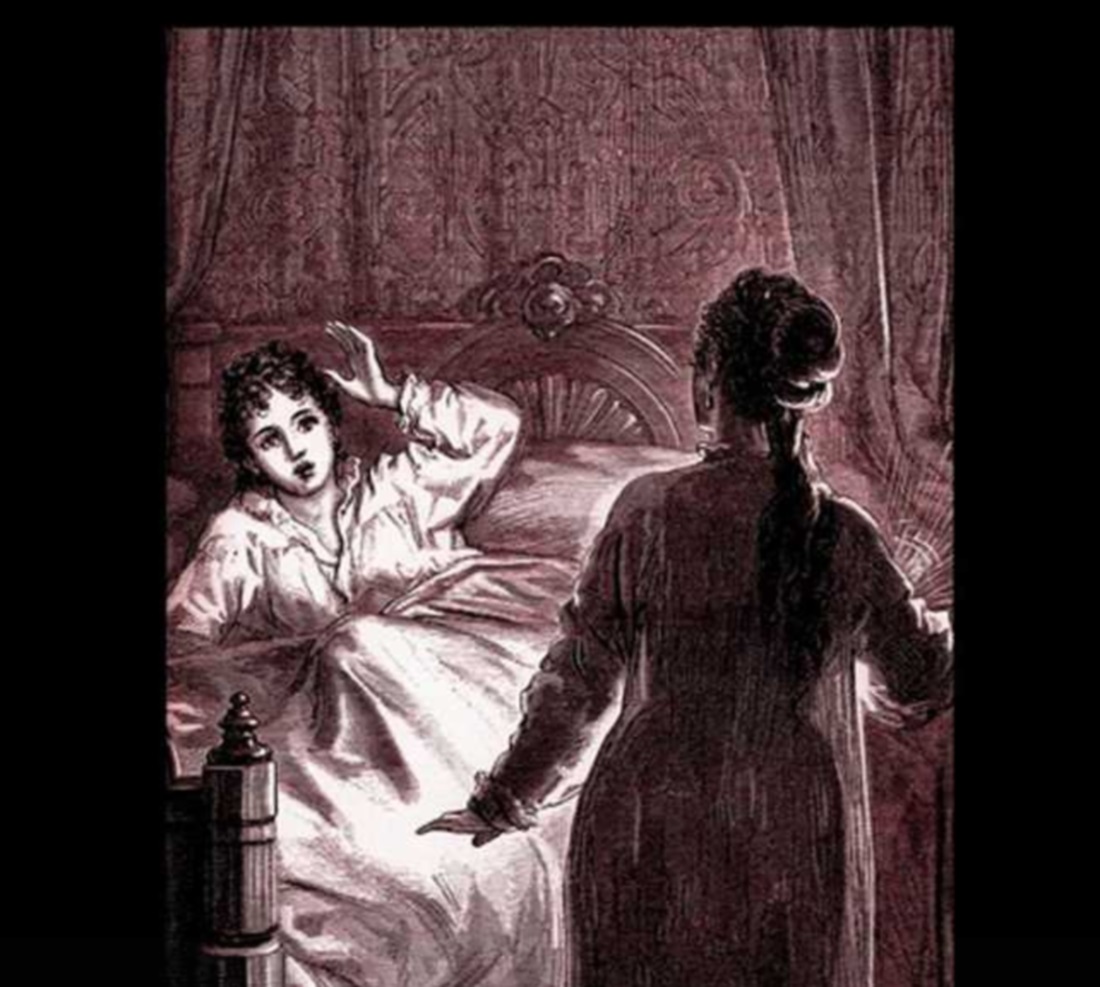Carmilla is a vampire book that, in my opinion, really isn’t as veiled of a homoerotic piece of fiction like Dracula is. While Dracula is couched in mystery and has a fairly strong tug of (suspiciously aggressive) heterosexual love, Carmilla is full-on lesbian erotica. But also like Dracula, it’s also a piece that functions as a cautionary tale against same-sex love.
Carmilla tells the story of Laura, a wealthy young woman who lives with her father in a castle in Styria. As a child, Carmilla wakes during the night from an alluring stranger and is bitten on the chest, even though there’s no mark of a bite. Years later, she comes in contact with Carmilla, a young woman who comes to live with Laura after being in a carriage accident. Laura and Carmilla become friends and in Laura’s mind, everything’s great. Until Carmilla starts coming on to her. Lo and behold, Carmilla’s a vampire bent on seducing Laura to kill her. To quote Wikipedia:
Carmilla and Laura grow to be very close friends, but occasionally Carmilla’s mood abruptly changes. She sometimes makes unsettling romantic advances towards Laura. Carmilla refuses to tell anything about herself or her background, despite questioning from Laura. Her secrecy is not the only mysterious thing about her. Carmilla sleeps much of the day, and seems to sleepwalk at night. When a funeral procession passes by the two girls, Laura begins singing a hymn, Carmilla bursts out in rage and scolds Laura for singing a Christian song. When a shipment of family heirloom restored portraits arrives at the castle, Laura finds one of her ancestors, “Marcia Karnstein”, dated 1698. The portrait resembles Carmilla exactly, down to the mole on her neck.
I’ll let you read what happens at the end of the book; I don’t want to spoil the ending.
What surprised me was how graphic the passages about Carmilla’s lust for Laura were. For a book as old as it is, it reads as surprisingly modern erotica.
“I have been in love with no one, and never shall,” she whispered, “unless it should be with you.”
How beautiful she looked in the moonlight!
Shy and strange was the look with which she quickly hid her face in my neck and hair, with tumultuous sighs, that seemed almost to sob, and pressed in mine a hand that trembled.
Her soft cheek was glowing against mine. “Darling, darling,” she murmured, “I live in you; and you would die for me, I love you so.”
I started from her.
She was gazing on me with eyes from which all fire, all meaning had flown, and a face colorless and apathetic.
“Is there a chill in the air, dear?” she said drowsily. “I almost shiver; have I been dreaming? Let us come in. Come; come; come in.”
Also, Dracula was heavily influenced by Carmilla, which was published 26 years before. Dracula’s castle was originally located in Styria, and Dracula‘s Lucy and Carmilla’s Laura are basically the same character.
Something interesting of note: Canadian web series Carmilla, based on the book, features a legitimate love story (no possessive ridiculosity) between Carmilla and Laura.
What do you think about Carmilla? Give your opinions in the comments section below and follow COLOR on Facebook and Twitter!
One of the many Camilla covers from Amazon
